Marine Life Society of South Australia
Inc.
Newsletter
March 2006 No. 330
“understanding, enjoying & caring for
our oceans”
Next Meeting
This will be the February General Meeting and will be held at the Conservation
Centre, 120 Wakefield Street, Adelaide on Wednesday 15th March commencing at 7.30pm.
Our speakers will be:
FO(L) CC (Friends of (Living) Christie Creek – Rex Manson and Bon
Darlington who will be speaking on:
“Christie Creek is damaging Port
Noarlunga Reef”.
See the last item for more details of their topic.
CONTENTS
Some Of SA’s Long Lost Jetties - Part 2 (Steve Reynolds)
Memberships Due
The end of this month is the end of the MLSSA
financial year. Memberships will become due on the 1st April.
MLSSA Photo Index
Danny Gibbins has updated the PI on our website.
It contains many new pictures. Thank you Danny for your good work.
2006 Calendar Payments/returns
If you have any calendar payments or unsold calendars
could you please pay/return as soon as possible? This will enable Phill to
finalise the books for this year.
Social Officer
Steve has decided to relinquish this position. Is
there a volunteer to take this over until the AGM in May?
Some Of
SA’s Long Lost Jetties (Part 2)
SA’s First Jetty
Picture credits: (SR) = Steve Reynolds (PG) = Peter Gower
In
my article “My Continuing “Encounter” Experiences” which was published in our
2004 MLSSA Journal I wrote about the first jetty built at Reeves Point on
Kangaroo Island. I said that “The jetty was finished late in August 1838”. The
only thing wrong about this was that the accompanying photo* showed the Old
Quarry Jetty which, as I said in Part 1 of this article, was probably built
after 1850.
*The photo in
question also featured in Part 1 of this article.
The Old Myponga Beach Jetty
I
haven’t been to Myponga Beach for years but the last thing that I recall was
that very little of the old jetty there remains. There were just a few piles
and rotting beams left the last time that I was there. An episode of
“Postcards” on Channel 9 on 1st May 2005 featured the old jetty.
Only a few remaining piles could be seen. Myponga Beach was first settled in
1836. It became a small port to service the inland town of Myponga and a
109.8m-long jetty was built there in 1859. A ceremony was held on the jetty to
celebrate its opening. Once that a road over Sellicks Hill was built, the jetty
was no longer necessary for ships to service Myponga. So when was the road over
Sellicks Hill built? That would date the decline of the Myponga Beach jetty
which fell into disuse. Keith Conlon said on “Postcards” on 1st May
that a bad storm destroyed the old jetty in 1900 (forty years after it was
built). Neville Collins says that a fishing boat was blown ashore in the storm
and it hit the outer end of the jetty, damaging three spans of it.
(A fatal
accident marred the opening ceremony in February 1860. Some two hundred people
crowded onto the jetty for the ceremony resulting in a woman and baby crashing
onto the rocks. The woman (Mrs Lemon) died but the baby survived, its fall
being cushioned by its mother’s body.)
Old Jetties At Wallaroo
There
have been several jetties at Wallaroo on Yorke Peninsula. Two of these are shown
in a photograph in “Yorke Peninsula . . . A Resident’s Views” by Allan Parsons.
A temporary jetty was built there first in 1860. This is the one to the right
of the present shipping jetty. A new 197.5m-long permanent jetty was then built
in 1861. It was extended to a length of 244m in 1866. Work on a third jetty
began in April 1880. The 488m-long jetty, which was 13.4m wide, was completed
in August 1881. It was then extended another 152m to become a length of 640m
between 1899 and 1901. Another 215m were added in 1914 making it a total length
of 855m.
This old jetty,
known as Price’s jetty, apparently had tearooms at its shore end. Sometime
before 1933, a large overseas vessel sliced through the jetty, making a gap in
it. The jetty was later demolished.
According to
Phill McPeake’s report in our November 1981 Newsletter (No.54), Society members
who dived at the site of the old Wallaroo jetty (Price’s Jetty) over the long
weekend in October 1981 found “short stubs of old jetty piles and the debris
left when the old jetty was demolished”. Many old bottles and artifacts were
also found there.
A new 862m-long
shipping jetty was built in 1926 and opened in 1927. Some of the remains from
one of the old jetties were used to build the triangular ‘swimming pool’ area
at the new shipping jetty in 1933. The remains used may have been a combination
of material from the first temporary jetty and Price’s Jetty. A shark-proof
fence was built around the swimming pool area.
Some major
alterations were made to the jetty in 1958 and the length of the jetty was
reduced to 867m.
The shipping
jetty was damaged when the 25,000-tonne Chinese ship the Wauzhou
collided with it in October 1977. The ship caused some $1m damage to the jetty.
There was further damage done to the jetty in April 2000 when it was hit by the
(52,000 or 64,000 tonne) Maltese registered ship the Amarantos. The
224m-long ship hit the jetty between a number of structural elements. A section
of overhead loading gantry was severely damaged but damage to the jetty itself
was minimal. The estimated damage bill was, however, $2.5m.)
The Old Stansbury Jetty
The
present jetty at Stansbury on Yorke Peninsula is the second one there. The
first one was built beside the Dalrymple Hotel in 1877. It was 305m long and
was a Government owned jetty controlled by the Dalrymple District Council. It
had tram tracks and was used by ketches shipping grain, cement and lime across
Gulf St Vincent to Adelaide. Even though this old jetty apparently lasted until
1941, a second jetty was built there in 1905. The 308m-long jetty was located
about 800m further north of the first jetty.
A photo of the
opening ceremony at the jetty is featured in “Yorke Peninsula . . . A
Resident’s Views” by Allan Parsons. This second jetty was also a Government
owned jetty controlled by the Dalrymple District Council. The old jetty was
demolished in 1941 when it was used for target practice in a training exercise
for army engineers.
Old Port Clinton Jetty
A
jetty built at Port Clinton on Yorke Peninsula in 1863 was later removed when
the port became redundant. The old jetty had been 274m long. Stumps from it can
still be seen at low tide.
Old Port Vincent Jetty
A
36.5m-long private jetty was built at the end of Main Street at Port Vincent on
Yorke Peninsula in 1877. It was extended to 42.6m shortly afterwards. A large
grain and goods storage shed was built at the foot of the jetty. A tramway ran
from the shed out along the jetty. A 43m-long wharf was built next to the jetty
in 1902 and this was extended another 46m in 1908. 24m of the jetty were then
removed in 1915. Another 46m were then added to the wharf in the 1920s. The
remaining 18m of the jetty were removed in 1956.
Old Broad Creek Jetty
According
to the Port Adelaide Ships’ Graveyards web site
(http://www.environment.sa.gov.au/heritage/ships_graveyards/pt_adelaide.html
) a new powder magazine (for explosives) was built at Dry Creek in 1903.
Powder was
at first unloaded at the North Arm of the Port River and transported from there
to the new magazine by horse and dray. In 1906 a closer landing site was
established at the end of Broad Creek, southeast of Barker Inlet. A 31m long
jetty was built and a 1½mile tramway connected it to the new magazine. The
tramway was 2½ feet wide.
By 1972
the channel to the jetty had become too shallow for small vessels. In April
that year only two launches owned by Mr ME Lawrie were able to work the creek.
They were restricted to working at, or near, high tide. This restriction
limited their work to just two trips
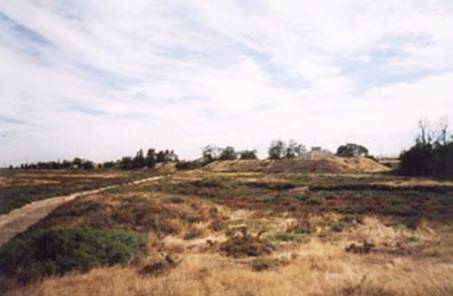
Photo 12: Powder magazine at Dry Creek in 2005 (SR)
each per
day. There is a photo of the Broad Creek Jetty (taken in 1997) on the web page,
along with the comments that “The remains
of the old
jetty and tramway are still visible in Broad Creek today”.
The Old Victoria Pier At Victor Harbor
The
first part of the causeway to Granite Island at Victor Harbor was built between
1862 and 1864. It was Victor’s first jetty. A pier was built at the end of this
jetty. It was named the Victoria Pier after Queen Victoria and it was opened on
4th August 1864, following the opening of the extension of the
railway from Port Elliot to Victor Harbor on the same day.
The Old Victor Harbor Swimming Baths
Swimming
baths were constructed on either side of the jetty (causeway) because men and
women had to bathe separately. A deeper swimming area was then built between
the jetty and its spur (the Victoria Pier) in 1899. A larger area had to be
made for swimming by 1905. The baths had a shark-proof fence built around them.
The baths, however, fell into such a bad state of disrepair that they were not
being used and were eventually demolished in 1955.
The Old Granite Island Jetty
Victor
Harbor’s first jetty was extended to Granite Island in 1875 (to become the
causeway) and another jetty was built on the island. The new jetty (described
as “a timber-piled wharf”) was called the Working Jetty or Shipping Jetty. It
ran in an easterly direction in continuation of the roadway (on the island)
from the end of the causeway.
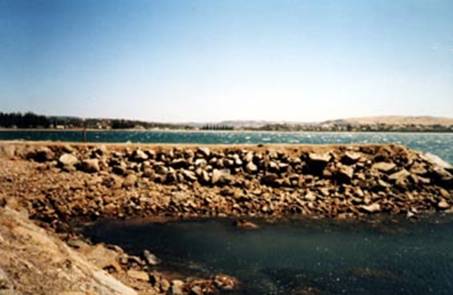
Photo 13: Site
of the Working Jetty on Granite Island in 2005 (SR)
In 1878 work
started on the Screwpile Jetty and the nearby breakwater on the island. Both
the jetty and the breakwater were finished in 1882. So what became of the
Victoria Pier and the Working (or Shipping) Jetty? I have only been able to
find out that one of them was demolished in 1957. This was the year that the
causeway had to be rebuilt and may give a clue as to which jetty was demolished
then. The Screwpile Jetty was also reconditioned that same year (1957).
Port Broughton Jetty
Several
other jetties have had to undergo major repairs or replacement, including the
one at Port Broughton. The first jetty to be built on the site of the present
day jetty at Port Broughton was built there between 1873 and 1874. It was 384m
long. By 1876, however, this jetty was in such poor shape that it had to be
replaced. It seems that the new (present) 379m-long jetty was built right over
the top of the old one. The new T-shaped jetty was built (completed?) in 1878.
Both ends of the ‘T’ section were extended in 1890. The jetty had to be
repaired in 1954 (& 1963?). Neville Collins says that the length of the
jetty is now 374m and the ‘T’ head is 75m long.
When I did my
first dive at the new Port Broughton jetty I found many old piles and pile
stumps on the bottom under the new jetty. The following photo of the present
jetty shows old piles cut just above the ground. These could either be from the
old jetty or from when the present jetty was repaired in 1963. There is some
signage at the present jetty giving details of Port Broughton’s history, the
jetties, the area as a port and the local fishing industry. These signs feature
several old jetty photos.
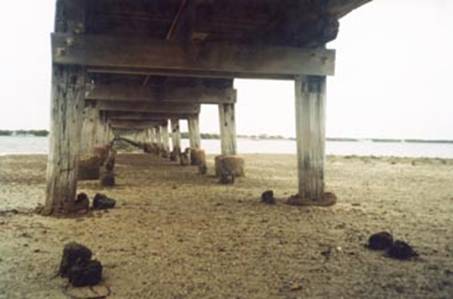
Photo 14: The new jetty at Port Broughton showing
old piles cut just above the ground (SR)
Other Old Jetties
There
are many cases of original jetties being replaced by new ones. Four jetties,
for example, have been built at Normanville on the Fleurieu Peninsula. The
jetty at Port Noarlunga on the Fleurieu Peninsula and the metropolitan jetties
at both Glenelg and Brighton are the second ones to be built there. Some four
jetties have been built at Robe in SA’s southeast.
Normanville’s Jetties
Normanville’s
first jetty was built between 1853 and 1855. The 115m-long jetty was washed
away during floods in 1856. The next two jetties to be built there were located
south of the first one. One was built that same year (1856). A larger one was
built between 1866 and1868. It was 128m long and had double tram tracks on it.
In June 1889 the 30-tonne ketch Cowie was blown ashore and was wrecked
close to one of the jetties at Normanville. A fourth jetty was built at Haycock
Point, north of the third one. It was completed in 1923 and it was 182m long
with a 55m-long ‘T’ head. It was, however, soon demolished. The third jetty
remained still, but storms over the years reduced its length to just 67m.
Old Port Noarlunga Jetty
The
first jetty at Port Noarlunga on the Fleurieu Peninsula was built in 1855. It
was some 122m long (400 feet) at first but it was then extended to 180m (591
feet) in 1878. A tramway transported cargo from a wharf on the Onkaparinga
River to the jetty where it was loaded on to ships. The tramway included a
tunnel through sand dunes and a towpath on the Onkaparinga River from (Old)
Noarlunga to Port Noarlunga.
The
tow-path was some 5km (5m) in length. It was used to tow barges from flour
mills to the tramway tunnel. Horses then pulled wagons through the tunnel and
out on to the jetty. Ships would be anchored inside the reef. Small boats were
used to take goods out to the waiting ships. A crane on the jetty was used to
lower cargo on to the small boats. The jetty was under the care of the district
council which received jetty dues. It was storm-damaged in the early 1900s,
including a bad storm in 1913. It was then demolished in 1914. Neville Collins
says that pile stumps can still be seen 30m south of the present jetty at low
tide.
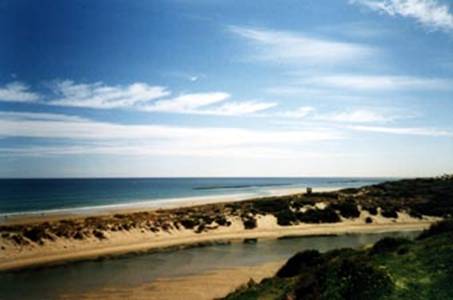
Photo 15: The Port Noarlunga sand dunes and reef behind the mouth of
the Onkaparinga River (SR)
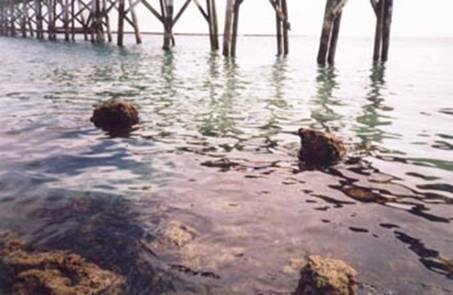
Photo 16: Are these old jetty
piles close to the Port Noarlunga jetty? (SR)
The present jetty at Port Noarlunga was built between 1919 and 1921. It was 341m long and 2.4m wide. It reached the northern reef at the time but it is now a little shorter following recent storms. The jetty was badly damaged in March 1984 and much of its structure had to be either repaired or replaced. Another violent storm in 1987 washed away the last 15m of the jetty. It is apparently now 322m long.
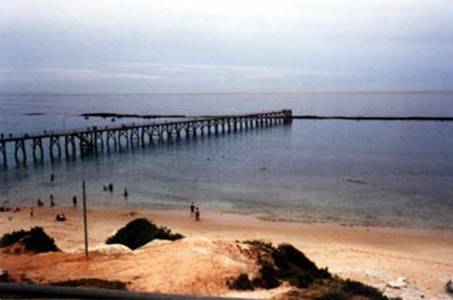
Photo 17: The new jetty at Port Noarlunga (Photo
by Peter Gower)
Old Glenelg Jetty
Glenelg’s
first jetty was built between 1857 and 1859. My article “The Glenelg Jetty” in
our June & July 2002 Newsletters gives more details about the jetty. It was
opened by His Excellency, the Governor-in-Chief, Sir Richard Graves MacDonnell
in a huge ceremony at 2pm on Monday 25th April 1859.
(Sir
Richard was Governor of SA from 1855 to 1862. Many locations in SA have been
named after Sir Richard, including the Sir Richard Peninsula near the mouth of
the River Murray. Lady Freeling, wife of Sir Arthur Henry Freeling, assisted
Sir Richard in the opening of the Glenelg jetty on 25th April 1859.
Many locations in SA have been named after Sir Arthur.)
A large
aquarium was built on the jetty in 1929. It would display creatures such as
fish, sharks, dolphins, seals, stingrays and octopuses. The jetty was badly
damaged by a huge storm in April 1948. The storm also swept part of the
aquarium out to sea. Although a section of it survived the storm, it was of no
use without the jetty itself and so it was later demolished.
Glenelg
needed a new jetty but it was 20 years later before a new one was built. The
new jetty was opened in May 1969.
Christie
Creek is Damaging Port Noarlunga Reef
Rex Manson and Bon Darlington, co-chairpersons for
the Friends of (Living) Christie Creek, will be discussing the problem of
damage being caused to the Port Noarlunga reef by pollution from Christie Creek
as guest speakers at our 15th March meeting
It is claimed that a high silt load from the
creek, caused by erosion and stormwater runoff, is strangling marine life on
the reef. Some of the stormwater runoff comes from the Southern Expressway. The
pollution is said to be preventing access to nutrients by marine life.
John Hill, the Environment Minister (at that
time), has established a task force chaired by Dr Don Hopgood to plan a program
of works to address the problem of damage being caused to the reef by pollution
from the creek. Work on the creek should begin early this year.
(Courtesy SDF Newssheet)